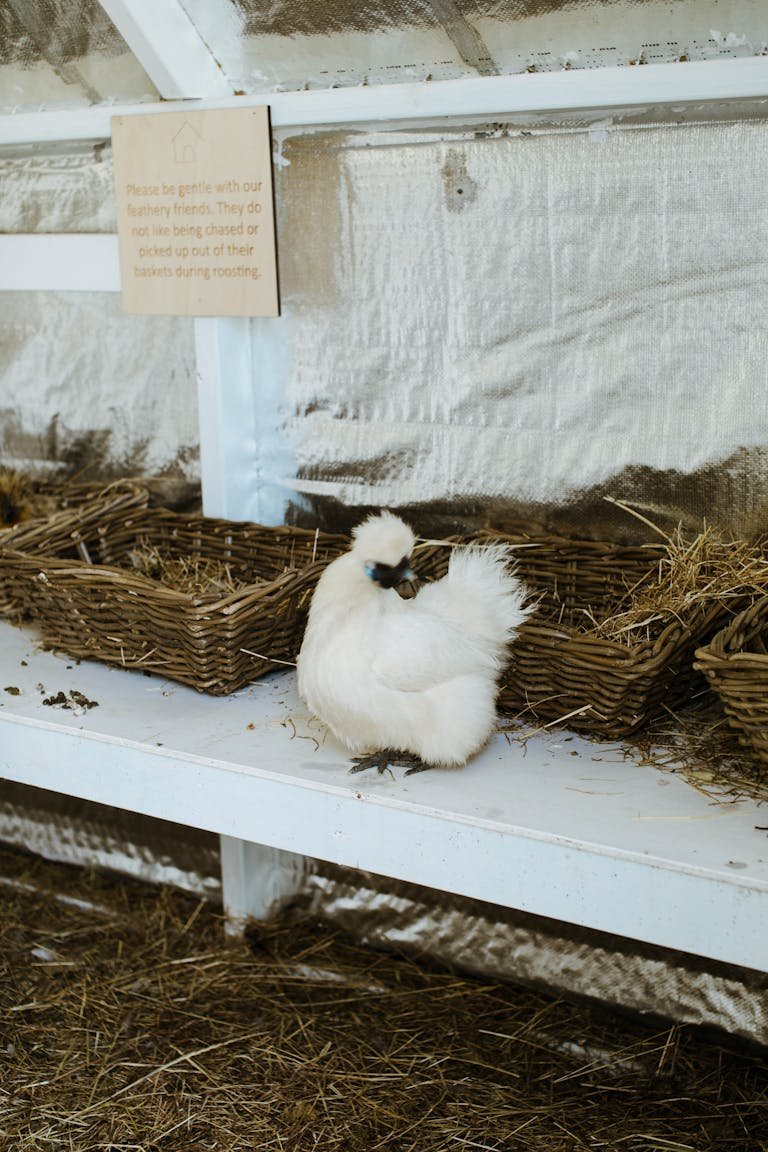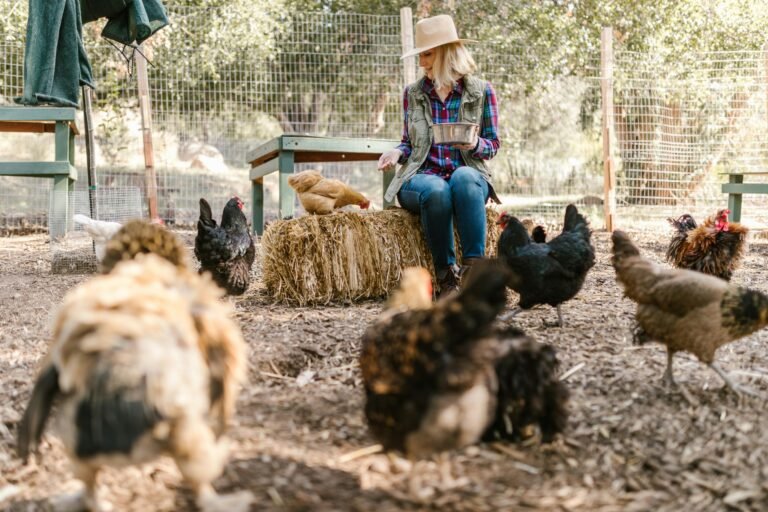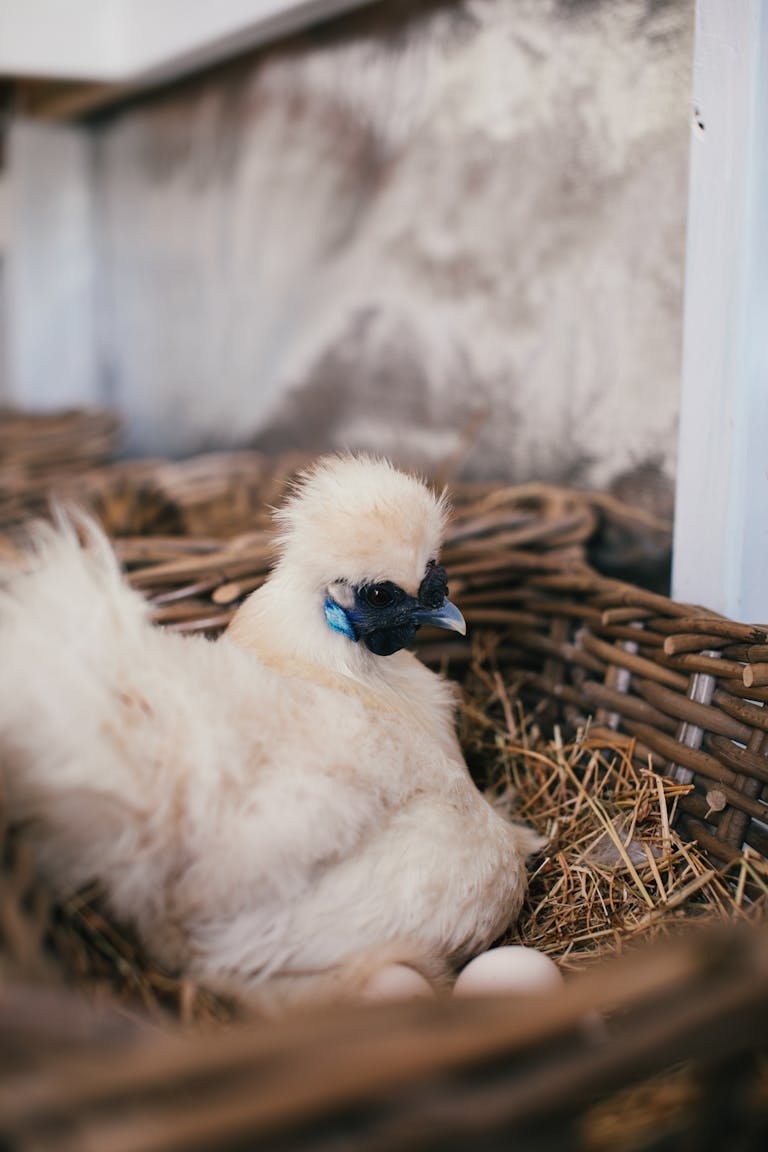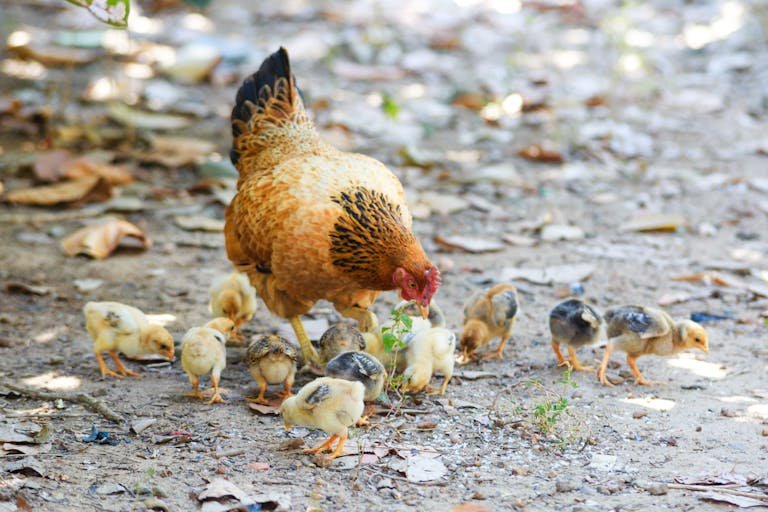Clucking Crazy: Why Chickens Lose Feathers

Feather loss is often considered usual in growing chickens nonetheless, it causes a lot of alarm in any poultry keeper. Chickens are naked for various causes that include but are not limited to natural molt, diseases, stress, or environmental causes. If you understand why chickens are losing their feathers and what measures to take when this is happening then you will be in a good position to handle your birds better.
In this guide, I’ll show you the main possible causes of feather loss in chickens, how to recognize these causes, and what to do if your chickens begin to lose their feathers.
Normal Molting
The most apparent and usual cause of feather loss among poultry is molting. Molting is a critical process in the life of a growing chicken, where hens change old worn-out feathers and grow new fresh ones. This process is cyclical and is observed in most chickens during cycles of at least once or twice a year.
Seasonal Change
The majority of chickens lose all their feathers during a molting period, which occurs mostly in the fall; some chickens also experience molting in spring. At this stage, chickens gain many bald spots and look like they have lost many feathers if not all. This can seem rather scary if you are a beginner to the process, but do not fret – it is perfectly healthy.
- Purpose of Seasonal Molting: Seasonal shedding of the feathers is another method for chickens to remove their feathers that are not good for them so that they can be replaced by better feathers that could help them survive the cold season.
- How It Happens: Molting occurs from the head and neck down to the rest of the body and organs of the body. This gradual process can take several weeks or even a few months.
- What You Can Do: Provide extra protein during the molting period. Since feathers are made primarily of protein, a protein-rich diet helps chickens grow new feathers faster.
Reproductive Cycle Molting
Female make a molting of their feathers associated with their reproductive cycle during the laying of eggs or after hatching of their eggs. This type of molting assists hens to save a lot of energy and make their bodies ready for the next mating season.
- Why It Happens: When a hen has been laying for several days, her body must take a rest. So to do so she has to molt and allow her body energy to now go towards repairing her feathers and getting her overall health back.
- How You Can Support Hens During This Time: As with any other changes in the behavior of the reptiles, increase the portions of proteins in your reptile’s diet and make sure that the reptiles have clean water and a proper living environment since they tend to do so during the seasonal shedding.
Health Issues Leading to Feather Loss
There are many reasons why chickens molt and drop their feathers apart from molting which is caused by nature. Quite often these health-related causes are closer scrutiny or intervention to regain good bird feather health.
Parasites: Mites and Lice
Some of the exogenous factors that cause the loss of feathers in chickens include mites and lice that infest the bird’s Skin. These are fleas and mites that infest the skin or blood of these birds and as a result cause inflammation, itching, and consequently loss of feathers due to constant scratching or pecking.
- Signs of Mites and Lice: This is expressed through symptoms such as excessive body scratching, raw skin or scaly skin, the presence of mites or lice around the vent or anus, and less laying of eggs.
- Treatment Options: Dust baths with diatomaceous earth or a suitable poultry dusting powder can help deter and kill these parasites. It’s also essential to clean the coop regularly to prevent infestations.
- Prevention Tips: Maintain a clean environment, offer frequent dust bath opportunities, and regularly inspect chickens for any signs of parasites.
Fungal Infections: Aspergillosis and Other Fungal Diseases

There are other diseases caused by Aspergillus and other fungi, which will be discussed in more detail below. Fungal infections can also be a reason for feather loss even if the main location of the disease is aspergillosis. Some of the fungal infections can provoke rather severe complications and may need veterinarian assistance.
- Symptoms of Fungal Infections: The inability to see due to swollen eyes, loss of feathers around the face, and having a hard time breathing are generally symptoms of a fungal attack.
- Causes: Many diseases are brought about by damp or poorly ventilated coops that give way to molds and fungi.
- Treatment: There are antifungal drugs, which a veterinarian can recommend for use to control the situation. Ventilating coops and minimizing moisture retards fungal development to an extent.
Bacterial Infections
Skin infection may also lead to feather loss, especially by bacteria or it may cause a bird’s immune system to get compromised, causing the feathers to become brittle.
- Common Symptoms: Inflammation, erythema, feather loss in the area of the lesion, and lethargy.
- Causes: Most of the bacteria are caused by poor hygiene, crowded dwellings, and contaminated water supplies..
- Prevention and Treatment: Use fresh water and enough space and clean the coops consistently. During the presentation of the symptoms, antibiotics bought over-the-counter are rarely required.
Nutritional Deficiencies
Healthy feathers and proper nutrition go hand in hand Foods that are good for human health should also be good for birds. Protein and some vitamin deficiencies lead to chickens having brittle feathers and even losing some of them.
- Key Nutrients for Feather Health: Protein, the B group of vitamins, vitamin E, zinc, and biotin are important.
- How to Ensure Nutritional Balance: Give your chickens a quality poultry feed and add protein sources such as meal worms, sunflower seeds, or scrambled eggs when they are molting or losing feathers.
- Signs of Nutritional Deficiencies: Brittle or dull feathers, slowed feather regrowth, decreased energy, and decreased egg production.
Behavioral Causes of Feather Loss
Chickens may sometimes engage in behaviors that cause them to lose feathers, particularly when they’re bored, stressed, or lacking certain nutrients. Understanding these behaviors can help you create a more enriching environment that discourages feather-damaging habits.
Feather Picking: A Response to Stress or Boredom
Feather picking is a behavior where chickens peck at their own or other chickens’ feathers, often leading to bald patches.
- Reasons for Feather Picking: Boredom, nutritional deficiencies, and overcrowding can all lead to feather-picking behavior.
- How to Curb Feather Picking: Ensure your chickens have plenty of space, access to a balanced diet, and environmental enrichment like perches, dust baths, and toys.
- Identifying Feather Pickers: Observe the flock to see if certain chickens are more aggressive or tend to pick on others, allowing you to take targeted action.
Cannibalism: When Feather Picking Escalates
In severe cases, feather picking can escalate into cannibalism, where chickens injure or even kill others in the flock. This behavior is particularly common in overcrowded or stressed flocks.
- Signs of Cannibalism: Feather missing around the head or the vent area, injuries and change of attitude, attacks.
- Prevention Strategies: Provide ample space, reduce flock size if necessary, and keep stress to a minimum by maintaining a consistent and calm environment.
- Additional Solutions: Consider adding barriers or partitions to create more private spaces within the coop and reduce the visibility of wounded chickens to prevent further pecking.
Read Also: How Much Water Do Chickens Drink in a Day? An Expert Guide
Environmental Factors Contributing to Feather Loss
Proper health of the feathers in chickens is important and largely dictated by the environment. Stress, lack of appropriate hygiene, and hot or cold temperatures can cause your flock to lose feathers and generally be uncomfortable.
Stress: The Impact of Environmental Stressors on Feathers
Stressful situations, that may be explained by environmental changes or shifts in the schedule, often cause feathers to drop. Birds are very sensitive animals and anything small that happens will affect them in one way or the other.
- Common Stressors: Large population density of animals; cage space; noise; frequent disturbing or provoking of the animals.
- How Stress Leads to Feather Loss: Prolonged stress triggers the production of cortisol which hinders the immune system, the feather’s health, and their growth.
- Creating a Stress-Free Environment: Provide much space; provide enough fresh air; avoid touching as much as possible develop a routine to make chickens comfortable.
Poor Hygiene: Importance of a Clean Living Space
Dirty or damp living conditions can contribute to feather loss in chickens, especially by promoting infections and parasites.
- Signs of Poor Hygiene: Foul odors, mold growth, damp bedding, and increased pest activity.
- Maintaining Cleanliness: Clean the coop regularly, change bedding frequently, and ensure proper ventilation to keep moisture levels low.
- Benefits of a Clean Environment: A clean coop reduces the risk of infections, parasites, and other health issues, ultimately supporting healthier feathers.
How to Prevent Feather Loss in Chickens
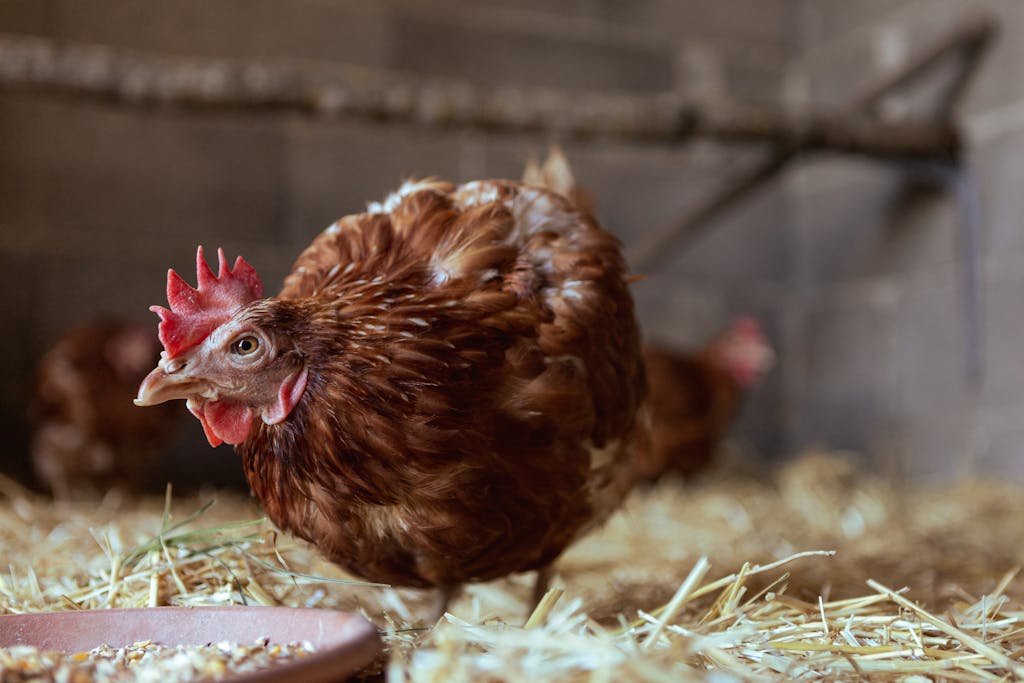
There are also preventive measures to be taken to ensure that your chickens’ feathers coat and all the feathers in general are intact. If their nutritional, environmental, and social needs are met appropriately, you can reduce the chances of feather loss.
Provide a Balanced Diet
Ensuring your chickens have a diet that meets all their nutritional needs is the foundation of healthy feathers.
- High-Quality Feed: Choose a well-balanced feed that is rich in protein, vitamins, and minerals to support feather growth.
- Supplemental Foods: In addition to the regular dog food they should occasionally give them treats such as mealworms, fruits, and green leaves to supplement their diet.
- Nutritional Supplements: Supplements such as vitamins and minerals may be used during molting time or where there is featherlessness.
Maintain a Clean Environment
A clean and dry living space is essential to prevent infections, parasites, and stress-related feather loss.
- Regular Coop Cleaning: Clean the coop and replace bedding weekly to prevent the buildup of waste and moisture.
- Proper Ventilation: Ensure your coop has good airflow to reduce humidity and remove ammonia from droppings.
- Dust Bath Areas: Provide a dust bath area with materials like sand or diatomaceous earth, which helps control parasites naturally.
Reduce Stress
It is important to keep chickens’ stress levels low in order to avoid feather loss and for this reason, it is important to maintain high health standards.
- Adequate Space: Ensure chickens have plenty of space to roam, both in the coop and in the run.
- Reduce Disturbances: Avoid unnecessary loud noises, minimize predator threats, and maintain a predictable daily routine.
- Enrichment Activities: To help chickens not get stressed or bored make sure the cages are fitted with perches toys and activities to keep the chickens busy.
Read Also: How Long Do Chickens Sleep: A Surprising Fact
Final Words
It is basically advisable that feather loss in chickens can be a result of many factors, but stress and other negative factors can be minimized greatly by creating a perfect atmosphere for the chicken. You can therefore take necessary precautions so that you do not end up with chickens that are always losing their feathers and therefore always bare-skinned all oftentimes due to certain causes explained above.

